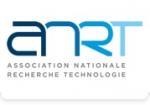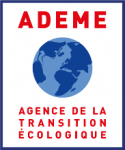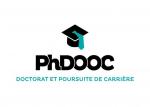Towards electron-Deficient Organic Nanorings
| ABG-133919 | Master internship | 5 months | gratification 500-600 euros/month |
| 2025-10-20 |
- Chemistry
Employer organisation
Website :
The Chemistry Laboratory (LCH) is a joint unit operated by the CNRS, the École Normale Supérieure de Lyon and the Université Claude Bernard Lyon 1. Funded in 1987, it was directed successively by André Collet (the Laboratory was then called STIM), Lyndon Emsley, Philippe Sautet, Chantal Andraud, et now Stephane Parola. It is localised on the campus Monod of the École Normale Supérieure de Lyon.
LCH is at the center of a wide network of partnerships with acadmia but also defense and industry, at the regional, national and international scale.
The research PIs are grouped into three research axis :
-Theoretical Chemistry & Molecular Thermodynamic
-Supramolecular Chemistry & Chemical Biology
-Functional Materials and Photonics
They benefif from a high-quality technical support. LCH develops intedisciplinary research projects at the cross-road of biology, material science and physics, from fundamental to more apply science. It gathers researchers with a large spectrum of expertise in synthesis (organic, inorganic, (nano)materials, material forming), charaterization and advanced spectroscopies, in conjunction with a strong expertise in atomistic modeling (excited states, reactivity, liquids).
Description
Nano-sized molecular rings, best known as Nanorings, are currently the subject of intense research efforts motivated by to their outstanding photochemical, electrochemical and chemical properties. The rare examples of e--rich nanorings described so far in literature are built from carbazoles, phenylenes, or porphyrin units
The aim of this project is to develop a method to access a new class of water-soluble, e--deficient, cationic conjugated organic macrocycles of diameters ≥ 2 nm. Due to their large size and conjugated character, such structures are expected to show outstanding chemical and physical properties finding applications in many different fields like molecular electronics, sensing, or imaging. The integration of e—deficient AND cationic subunits in conjugated nanorings is expected to afford a new class of compounds with unprecedented properties due to their high e--accepting character, rigidity, circular shape, electron delocalization and water-solubility. The objective of this work will be to synthesize nanorings incorporating 4,4’-bipyridinium subunits (also known as viologens). These species have been selected for their e--deficient nature, synthetic availability, well defined redox properties and structural tunability. These dicationic units have already proved extremely useful for the development of organic batteries, photo/electrochromic devices, molecular machines, or as electron mediators in catalysis. However, organizing viologens into nanorings is not trivial and the metal template approach used for the preparation of porphyrin nanorings3 is not applicable to viologens. We will explore in this project an original and straightforward strategy to address these issues and provide access to water-soluble cationic conjugated nanorings based on viologens. This project will be developed as part of an ongoing collaboration between the chemistry lab. at ENS de lyon and ICR at Aix-Marseille University (D. Bardelang and A Kermagoret).The internship will be funded by ANR (ANR Stargate 2023-27)
Profile
Most of the experimental work will focus on the synthesis and characterization of novel organic building blocks required for the synthesis of the targeted rings. The applicant will thus ideally have a multidisciplinary background with good expertise in (or taste for) organic chemistry.
Starting date
Vous avez déjà un compte ?
Nouvel utilisateur ?
Get ABG’s monthly newsletters including news, job offers, grants & fellowships and a selection of relevant events…
Discover our members
 ONERA - The French Aerospace Lab
ONERA - The French Aerospace Lab  Ifremer
Ifremer  MabDesign
MabDesign  CESI
CESI  Généthon
Généthon  ANRT
ANRT  Institut Sup'biotech de Paris
Institut Sup'biotech de Paris  Laboratoire National de Métrologie et d'Essais - LNE
Laboratoire National de Métrologie et d'Essais - LNE  SUEZ
SUEZ  CASDEN
CASDEN  Tecknowmetrix
Tecknowmetrix  MabDesign
MabDesign  ADEME
ADEME  ASNR - Autorité de sûreté nucléaire et de radioprotection - Siège
ASNR - Autorité de sûreté nucléaire et de radioprotection - Siège  PhDOOC
PhDOOC  Aérocentre, Pôle d'excellence régional
Aérocentre, Pôle d'excellence régional  Nokia Bell Labs France
Nokia Bell Labs France  TotalEnergies
TotalEnergies  Groupe AFNOR - Association française de normalisation
Groupe AFNOR - Association française de normalisation
